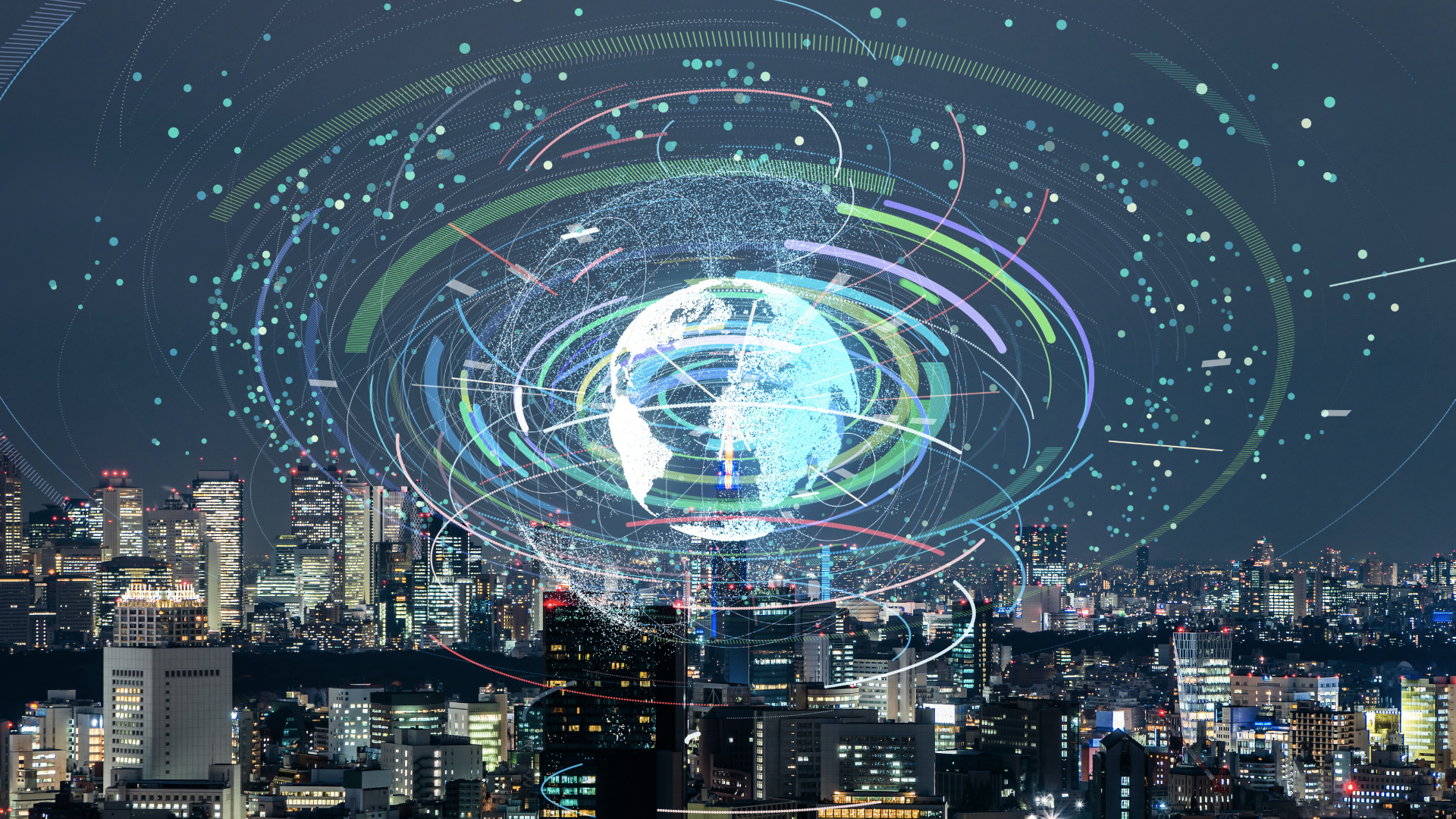The global urban population is at an all-time high, and growth is faster than ever. Cities must embrace smart technologies to achieve and maintain a sustainable urban ecosystem.
The United Nations estimates that
68% of the global population will live in cities by 2050. The same report states that by 2030, the world will have 23 megacities, each with more than 10 million people. These numbers are worrying without sustainable urbanization. In addition to straining resources, the ballooning urban population is threatening the environment in monumental ways.
Fortunately, technology is increasingly giving sustainability efforts the support they desperately need. Today, smart cities are no longer just a concept. Thanks to groundbreaking innovations like the Internet of Things, many smart metros have cropped up and are expanding rapidly. Municipal authorities worldwide are leveraging wireless networks to connect devices, infrastructure, and people in a way that addresses critical problems like waste mismanagement, landfills, and air pollution.
Read on to discover five cities at the forefront in implementing IoT to drive sustainability amid the rapidly increasing urban population.
1. Chicago - Array of Things
The World Health Organization reports that
seven million people die due to air pollution from sources like cars, factories, and power plants. Fortunately, metro areas around the world are responding to the concern by using technology to measure pollution and deploy improvements efficiently. With connected sensors, city authorities and clean-up organizations can collect critical data and use it to map high-pollution areas, identify sources, track changes over time, and analyze potential interventions.
Chicago is one of the cities leading the charge against air pollution. Deployed in 2014, its groundbreaking
Array of Things system connects sensors mounted on citywide lampposts. These sensors track a myriad of air pollutants, including carbon monoxide and nitrogen dioxide, enabling city administrators to take proactive measures against pollution. Chicago is also using this data to predict air quality incidents and shut down potential pollutants before they manifest.
2. Singapore - Smart, solar-powered rubbish bins
Since the digital age began, Singapore has been a leader in technology and successful urbanization strategies. This island city-state has occupied the top spot on the
Global Smart City Performance Index since 2017. The index grades cities on their utilization of technology to improve resident mobility, health, safety, and productivity.
Singapore deployed its first bunch of
smart garbage bins in 2016. These bins were equipped with fill level sensors, which triggered compactors when waste reached the top. Compacting multiplied trash bin capacity by eight times, dramatically reducing garbage overflows and collection trips.
Today, Singapore hosts more than 10,000 smart waste bins, most of them in high-traffic areas. In addition to taking up more waste than conventional cans, these bins can close automatically when full and alert collectors to empty them. The bins can also collect data to inform predictive analyses and contribute to efficient refuse disposal procedures.
3. Barcelona - The IoT program
Barcelona’s IoT program, which started in 2012, identified 12 key areas that required technological intervention, among them energy conservation, water pollution, air quality, and waste management. The program took advantage of the pre-existing 500 kilometers of fiber infrastructure around the city to install 19,500 smart meters for monitoring and optimizing energy consumption in targeted areas and thousands of smart bins to improve waste collection. Today, these bin sensors have been enhanced to integrate detection for different types of waste for streamlined recycling.
Barcelona has also implemented IoT solutions to control irrigation and fountain water levels in public parks. Using sensors to keep an eye on rain and humidity enables park workers to determine precisely how much water is required in each area. A system of valves is then remotely activated to deliver the required water. So far, IoT in Barcelona parks has achieved a 25% decrease in water consumption.
4. San Francisco - Sewage Monitoring
San Francisco collects
an average of 500 million gallons of wastewater every day. This water travels to three treatment plants, where pollutants are removed, and the clean water is discharged into the bay.
Processing wastewater is immensely challenging in San Francisco, mainly because three sides of the city are adjacent to the Pacific Ocean. Storms can easily overwhelm the sewage system, causing untreated water to drain in waterways and oceans.
Thankfully, IoT is offering San Francisco the ideal solution for monitoring drainage channels, mainly underground pipes. Using flow, turbidity, pH level, and oxidation sensors, city administrators can monitor wastewater movement and quality in real-time. That way, any increase in pollutants or flow rate can be captured early for timely decision-making.
5. London - Zero Vehicle Emission
As part of its Smart City strategy, London is actively partnering with tech companies to implement solutions for long-standing problems like traffic congestion and air pollution. Currently, the city has deployed traffic sensors around traffic hotspots to measure vehicle flow and identify early signs of gridlock. With this information, authorities can deploy mitigating measures before issues balloon into long-hour traffic jams. The less time drivers spend on the road, the less their vehicles pollute the urban air.
London also rolled out 12,000 smart LED lighting in major city streets. Rather than maintain a fixed brightness level throughout the night, these lights can dim or brighten depending on the time of day. This form of dynamic street lighting is saving 80,000kWh of electricity every year.
Although these cities are leading the IoT campaign, any municipality can take advantage of the Internet of Things to reduce costs, improve services, and address environmental issues.
IoT2Market is committed to becoming the top platform for sustainability-focused IoT products to gain the visibility they need to become mainstream and contribute to change at a much grander scale.
Register on
IoT2Market and browse through what the IoT market has to offer the smart cities of today and tomorrow.





